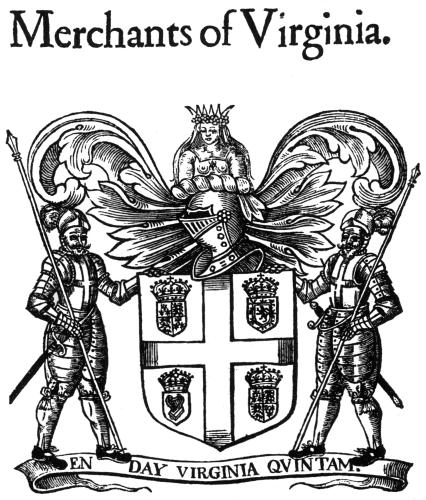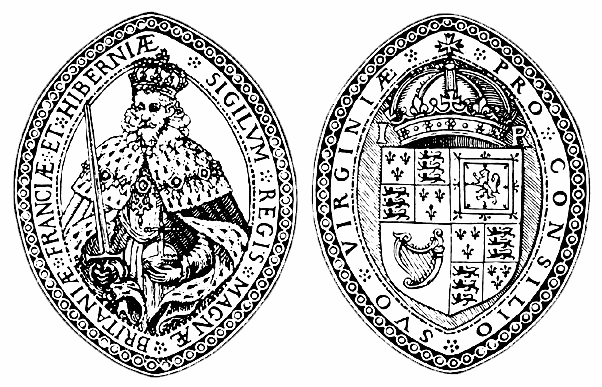|

 Corporate colonies Corporate colonies  Proprietary colonies Proprietary colonies  Royal or crown colonies Royal or crown colonies The textual material on this webpage is drawn directly from my work America - The Covenant Nation © 2021, Volume One, pages 72-74. |
|

 Corporate colonies Corporate colonies  Proprietary colonies Proprietary colonies  Royal or crown colonies Royal or crown colonies The textual material on this webpage is drawn directly from my work America - The Covenant Nation © 2021, Volume One, pages 72-74. |

|
|
Thus far we have seen colonies of the types that
might be termed a corporate colony, that is, set up and run as a huge
corporation –
such as the Virginia, Plymouth, and Massachusetts Bay
colonies. The corporate colony followed a procedure that is still
used today
when we incorporate businesses, creating them as legal persons by the
consent of the government (English kings back then) according to
specific
terms listed in their incorporating charter. These legal
corporations were/are subject by the governing authority to taxation
and to periodic review of
their operations to ensure that they continue to serve the purpose to
which
they were incorporated. If they violate this trust, they might
lose their
charter rights and be dissolved – as was the Virginia Company in 1624.
In 1500s and 1600s England the idea of corporations was closely tied to the need to gather together large sums of money to underwrite a huge business venture. Such ventures always required more than one person to contribute the investment capital necessary to get a particular industrial operation up and running. So a group of investors (adventurers) would get together and form a corporation. Typically, the adventurers bought shares or percentages of ownership of the corporate company and received accordingly their share of the profits (if there were any) proportionate to the number of shares they owned. The kings liked these kinds of ventures, because one of the stipulations in creating these corporations was that the king would receive taxes on any profits these ventures made. Being money-short, kings very much liked this kind of business deal. In the earliest cases of the use of this procedure to finance the startup of an American colony, the adventurers lived back in England and supervised the company from afar (such as the Plymouth Company and the Virginia Company). But the Massachusetts Bay Company had most of its adventurers or owners actually part of the group that settled in America – even taking their corporate charter with them. This gave the Massachusetts Bay Company a tremendous amount of independence of operation – being far removed from the scrutiny of the king! Soon other New England colonies joined Massachusetts in having not just their operations but also their governing councils with them in their colony in America. (The Plymouth Pilgrims did not have that advantage and were exploited terribly by their London adventurers). |
 "The Company of Merchants, called Merchants of Virginia, Bermudas, or Summer-lands, for (as I heare) all these additions are given them. I know not the time of their incorporating neither by whom their Armes, Supporters, and Crest were granted, and therefore am compelled to leave them abruptly." From John Stow, Survey of London, 1632 |

The Seal of the Company of Merchants of Virginia (1632)
The Royal Exchange in London in the early 1600s
where investment funding was raised by "Adventurers" buying shares in
various company operations ... including the Virginia venture.

|
| There
was another type of colony that was also in existence, the proprietary
colony. The king, in a feudal-like manner, could grant portions of his
kingdom, which included the English territories in America, to personal
supporters for whatever reason that moved the king to do so. The king
often paid off royal debts this way – or just simply granted the land
as a special favor to an individual or group of individuals who had
been particularly supportive of his rule.
Those favored by the king (usually always English noblemen) were given proprietorship over the colony by the king, much like a personal fiefdom. They received not only a huge land grant but also royal permission as personal proprietor over this colony to rule it in an absolute fashion – much like a medieval baron. For instance, Maryland (chartered in 1632) was a proprietary colony. The Calverts (Lords Baltimore, father and son) were entitled to govern their colony as they saw fit, develop whatever governmental institutions they found helpful to their rule, and even distribute portions of their land grant to whomever they wished – creating their own lord/vassal feudal relationship. They owed loyalty to the king, of course, with an understood promise to support him whenever the need arose from such personal resources as their properties supposedly offered. But what they did with their colonies was strictly the proprietors' business. Usually this involved granting portions of it to their own friends and putting other portions up for rent, offering land to tenants who in turn would pay the proprietors an annual quitrent. In general, the nobility who received lordship over these proprietary land grants were not terribly interested in actually living there. And they also had a very difficult time of it collecting the quitrents owed them. Thus these proprietary ventures tended not to turn out to be good money-makers for the proprietors. |


|
| A
third type of colony came into being, usually from the failure of one
or another of the chartered corporation colonies to perform as the
English king had come to expect (such as Virginia in 1624) – or through
shifts in the political scene which would cause the English government
to seize a proprietary colony (as was the case of Maryland in 1689 –
although the colony was returned to the Calvert family in 1715). The
king would rescind or terminate the colony's original charter,
re-charter it as a crown colony, and send a royal governor to the
colony to rule it in the name of the king.
This was generally not a popular move in the colonies. When in 1687 King James II wanted to convert the Connecticut colony from a largely self-running corporate colony to a royal colony run directly by him, Patriots hid the Connecticut Charter in the cavity of an enormous oak tree to keep it from falling into the king's hands. Of course it ultimately failed to stop the king. But nonetheless it was well- remembered as an early act of defiance of the colonists in protecting their liberties from a king who was determined to hold in his own hands all powers of life and death over his subjects. |
James II of England – by Nicolas de Largilliere,
ca.1686
British King,
1685-1688
National Maritime
Museum,
London
The fabled Charter Oak Tree in which the Connecticut Charter was hidden
to keep it from the hands of King James II who wanted to turn this independent corporate colony
into a royal colony, ruled directly by the King's governor under James's direct authority.
 Miles H. Hodges
Miles H. Hodges